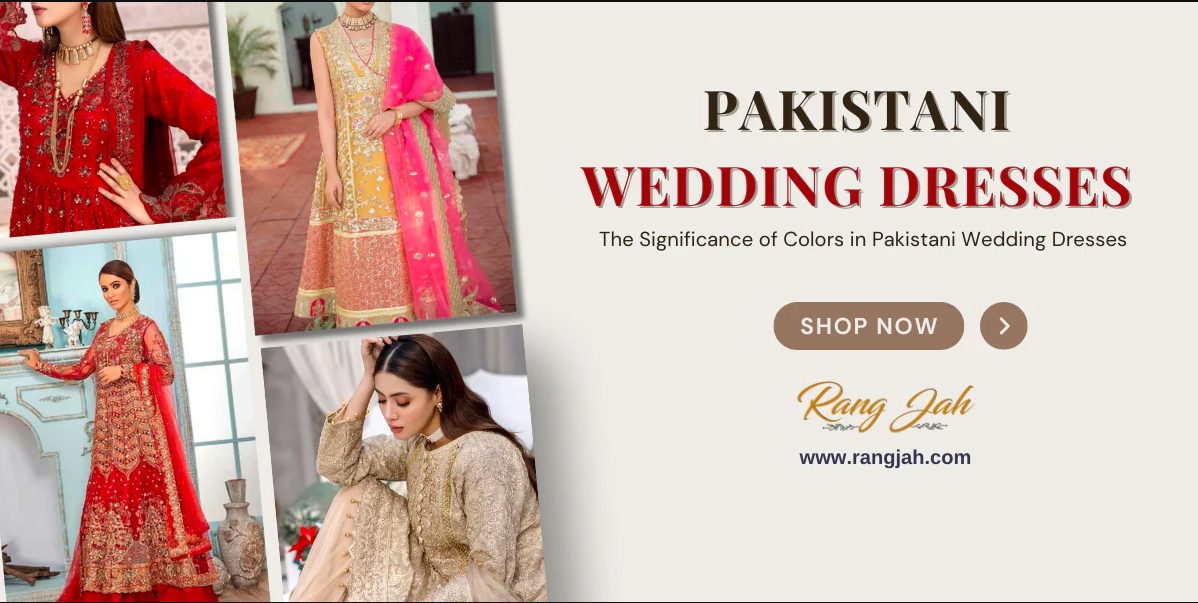Pakistani Wedding Dresses are celebrated worldwide for their unmatched elegance, intricate craftsmanship, and deep cultural roots. Over the years, these exquisite outfits have evolved to reflect both traditional aesthetics and modern sensibilities. Brides across different regions now seek these dresses not only for their beauty but also for the symbolism they carry. The global fashion industry has noticed this surge in popularity, as designers continue to innovate while honoring age‑old customs.
A Blend of Tradition and Modernity
One of the reasons behind the growing influence of Pakistani Wedding Dresses is their ability to combine traditional embroidery techniques with contemporary silhouettes. Rich fabrics like silk, chiffon, and organza are adorned with zardozi, gota, dabka, and threadwork, creating masterpieces that tell a story. Many brides prefer custom‑made ensembles that reflect their heritage while still looking chic and modern.
With evolving trends, lighter color palettes, pastel shades, and even unconventional tones are now included in bridal collections. These unique variations highlight how culture can adapt without losing its original essence. Brides who once preferred heavy reds and maroons now explore ivory, blush pinks, and subtle golds, all while staying true to the charm of Pakistani Wedding Dresses.
Cultural Symbolism Behind Every Stitch
Each bridal outfit carries a symbolic message that resonates with the bride, her family, and the community. In Pakistani culture, the wedding dress is far more than just attire—it represents blessings, prosperity, and the beginning of a new chapter. Handcrafted embellishments often take weeks or even months to complete, showing the level of dedication artisans put into their work.
In many regions, these dresses are passed down as heirlooms, linking generations through fabric and design. This practice underlines the idea that weddings are not just personal celebrations but cultural milestones. The attention to detail in every stitch, motif, and accessory ensures that the bride’s ensemble becomes a cherished memory for years to come.
Influence of Pakistani Designer Dresses
Modern bridal trends have been elevated thanks to renowned creators who specialize in Pakistani Designer Dresses. These designers bring forward bold ideas while respecting traditional artistry. They participate in international fashion shows, gaining recognition for the country’s rich textile heritage. Their collections introduce global audiences to the sophisticated world of Pakistani couture, further boosting its presence in the luxury market.
Adaptability Beyond Weddings
While the focus remains on bridal couture, many elements from these designs are influencing other formal outfits. For example, intricate embroidery patterns and color combinations have inspired Pakistani Party Wear Dresses. These outfits maintain a festive charm and showcase how bridal fashion impacts overall trends in formal wear.
Growth of Pakistani Clothing Brands
The expansion of well‑known Pakistani Clothing Brands has also contributed significantly to the worldwide popularity of bridal fashion. These brands are making high‑quality fabrics and contemporary designs accessible to customers in the Middle East, Europe, and North America. Their marketing strategies and online presence have allowed global brides to explore and purchase authentic pieces from anywhere in the world.
Global Recognition and Future Trends
Today, Pakistani Wedding Dresses are celebrated on international platforms and chosen by brides from diverse cultural backgrounds. The fusion of modern tailoring techniques with heritage craftsmanship makes these dresses stand out in a saturated global market. Experts predict that upcoming trends will focus even more on sustainability, lightweight fabrics, and minimalistic yet luxurious embellishments.
Conclusion: A Legacy That Continues to Inspire
The rise of Pakistani Wedding Dresses is not just a fashion movement—it is a cultural phenomenon that connects the past, present, and future. Each dress carries a legacy of artistry, tradition, and innovation, making it more than just a garment. As designers, artisans, and brands continue to showcase the beauty of these outfits, their cultural significance only grows stronger, ensuring they remain timeless symbols of elegance and heritage.



